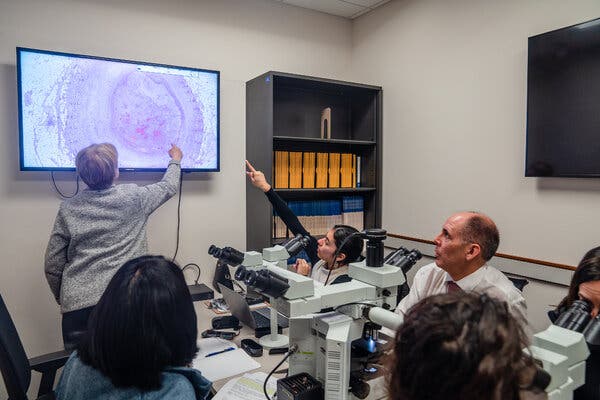
A Doctor’s Lifelong Quest to Solve One of Pediatric Medicine’s Greatest Mysteries
The New York Times-Science·2024-02-27 17:00
It looked like a scene from the TV crime show “CSI.” Dr. Jane Burns was peering into a multiheaded microscope at the San Diego County medical examiner’s office, scrutinizing autopsy samples from an array of mysterious deaths.
This one was from the heart of a 20-year-old jujitsu fighter who was last seen at the gym and was found dead in his bed two days later. There were no signs of foul play or self-harm.
The blood vessel tissue on the slide looked abnormal. Dr. Burns turned to the examiner: “I think this was likely one of mine.”
Dr. Burns is an expert in a rare childhood illness called Kawasaki disease, which is the most common cause of acquired heart disease in children worldwide. It is also one of pediatric medicine’s greatest mysteries: No one knows what causes it.
And Dr. Burns, who leads the investigations at the University of California San Diego’s Kawasaki Disease Research Center, has devoted her life to solving that mystery.
The condition, which usually occurs in children under 5, is easy to miss: There is no diagnostic test, and its symptoms — a high fever, rash, red cracked lips and a “strawberry tongue” — look to many doctors like scarlet fever, measles or a tick-borne illness, despite its signature distinction of bloodshot eyes.
Thank you for your patience while we verify access. If you are in Reader mode please exit and log into your Times account, or subscribe for all of The Times.
Thank you for your patience while we verify access.
Already a subscriber? Log in.
Want all of The Times? Subscribe.
……Read full article on The New York Times-Science
disease & illness Health

One-stop lifestyle app dedicated to making life in Singapore a breeze!

Comments
Leave a comment in Nestia App